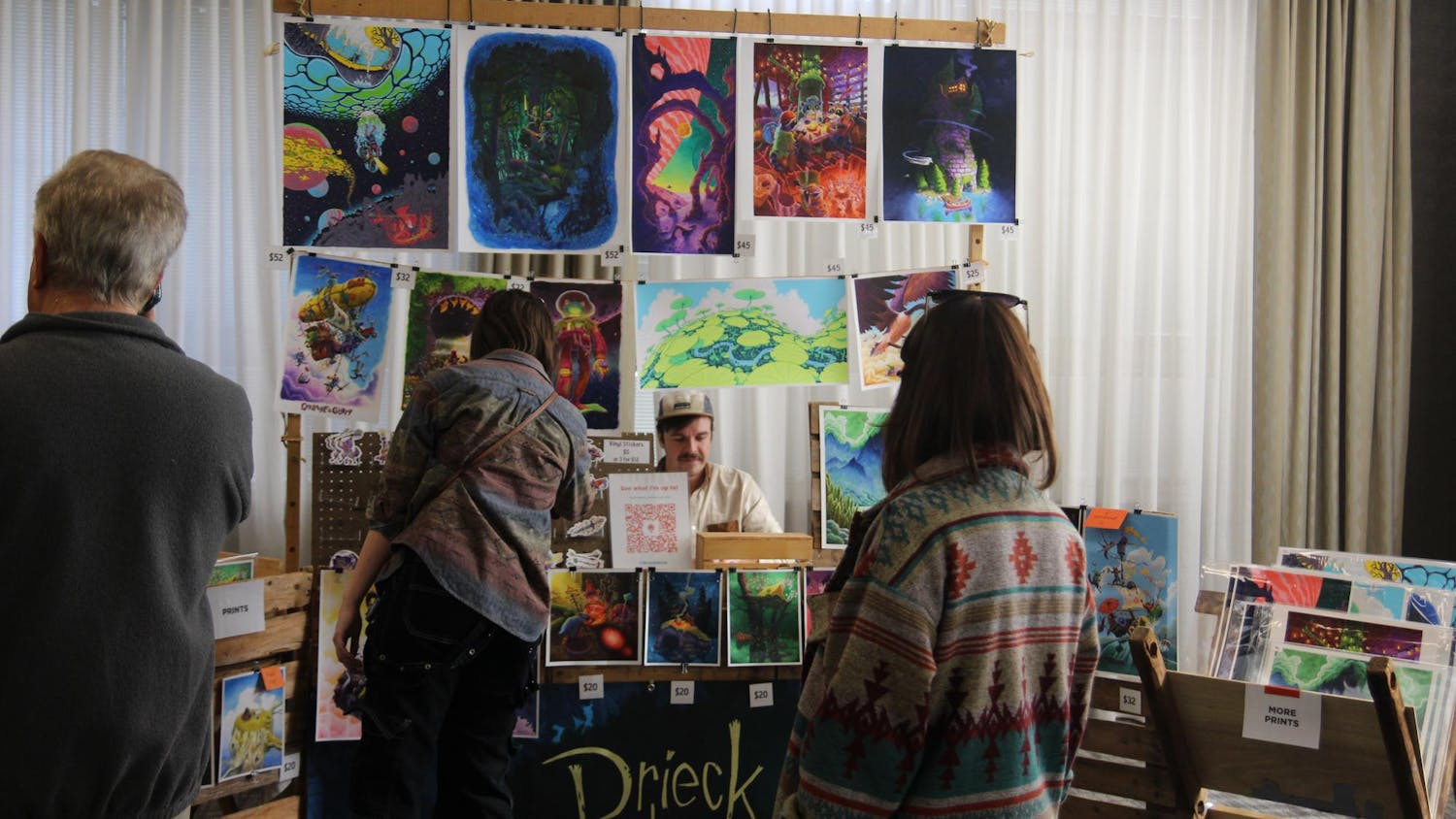Julian Hensarling doesn’t write graffiti on the streets anymore, and he misses it.\n“It’s the thing that defined me for a long time,” he said, referring to graffiti, a passion that led him to juvenile detention and later to jail. \nHensarling said for simply writing on a wall, many of his fellow graffiti artists have spent years in jail – a punishment, he believes, that does not fit the crime.\nHensarling and four other local graffiti artists prepared pieces for “Writing on the Wall,” an exhibit exploring the intersection of graffiti and democracy on display at the School of Fine Arts Gallery. It’s a change of pace for artists who are usually prosecuted for vandalism.\nNow an IU graduate student in printmaking, Hensarling has undergone apprenticeships with established graffiti artists in Salt Lake City and throughout California.\n“They’d tell you to try this letter scheme – do this with your paint,” Hensarling said. “They would critique me like they do in art school, but they wouldn’t be as nice.”\nHensarling’s exhibit piece “Minha Voz Do Gueto” incorporates Pixacao, a lettering form used in Sao Paulo, Brazil.\n“Pixacao came from a combination of comic books, which are some of the only things that are accessible and affordable to poor kids,” he said. “And the cholo style of graffiti from the gang culture of L.A. and Mexico.”\nHensarling used mud and a paint roller to create the top half of his piece.\n“In Brazil, the kids don’t have any money at all,” he said. “But one of the accessible things is mud.”\nHensarling painted the lower half with a mixture of pigment and motor oil.\n“When I was writing graffiti, we were always looking for more permanent material, so we’d mix up our own paints,” he said. \nIn the artist statement displayed next to the piece, Hensarling explained what graffiti means to its practitioners. \n“Kids with no money or status can be elevated to kings by climbing buildings and hanging over rooftops applying word to brick,” he wrote.\nMalcolm Smith, who prepared the piece “The Grand Experiment” for the exhibit, began writing graffiti when he was a kid. \n“I saw a documentary about graffiti and immediately understood its language,” he said.\nAs a young adult, Smith learned the finer points of graffiti from East, who he described as “a world-famous graffiti artist from Chicago who had probably done graffiti on every continent on the face of the earth.”\nSmith explained how a graffiti apprenticeship works.\n“You watch, listen, learn, practice,” he said. “You try to understand style and can control.”\nIn his exhibit piece, Smith portrays democracy as a “chemical wildfire” poured out of test tubes.\n“It’s an objective look at something we don’t have control of, although we like to think we do,” he said, referring to democracy. “I’m trying to say it’s an idea that is out of control and doing as much harm as good.” \nSmith’s piece incorporated pre-“wild style,” old-school graffiti. \n“Wild style” is an abstract lettering form that uses twisted and camouflaged letters, he said.\nUnlike the other graffiti artists participating in the exhibit, Mike Burchfield is still active on the streets of Bloomington.\nHis work can be seen behind Bloomingfoods, Rhino’s Youth Center and just south of campus at Steve Sheldon Photography, where the owners have donated wall space.\nBurchfield prepared an untitled piece for the “Writing on the Wall” exhibit, in which he equates fear with modern-day democracy by recreating the American flag.\nHe repeatedly wrote the word “fear” across the panel horizontally, so the words overlap numerous times and are nearly indistinguishable. Burchfield did this using red and then white spray paint, depicting the stripes of the flag.\n“Fear is an overwhelming presence in our day to day life,” Burchfield said. “It’s why people do what they do, dress the way they do, eat the way they do.”\nIn the upper-left quadrant of the piece, he represented the 50 stars and the field of blue by painting the word “Brisk” in large, blue graffiti font, adorned with lines of white dollar signs.\n“Brisk” is a moniker that appears on much of his work. Burchfield said he has had some problems with law enforcement because other graffiti artists in Bloomington have incorporated his moniker into their own work, damaging his reputation as a law-abiding artist.\nBecause of the differences in style and content, the unifying statement the exhibit makes about democracy is that each artist has a distinctive view of it.
Local artists show what democracy means to them
Get stories like this in your inbox
Subscribe





